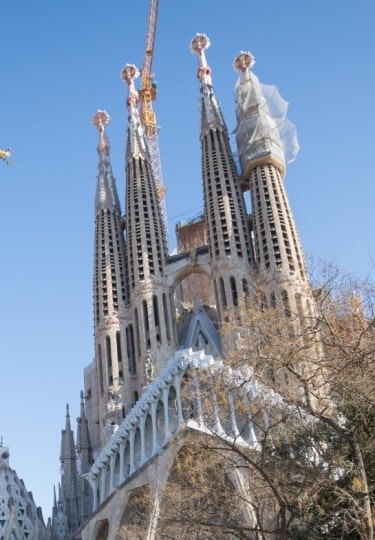If you are culture-hungry and interested in exploring art, history, and architecture on vacation, the world’s most unique buildings are a great place to start. These unique structures range from soaring modern skyscrapers to ancient churches and palaces.
When you visualize a destination, dazzling buildings such as Agra’s Taj Mahal and Barcelona’s Sagrada Familia are often the places you envision.
From sacred temples to gleaming opera houses and fanciful museums, these are 15 of the most unique buildings in the world.
Leaning Tower of Pisa, Italy
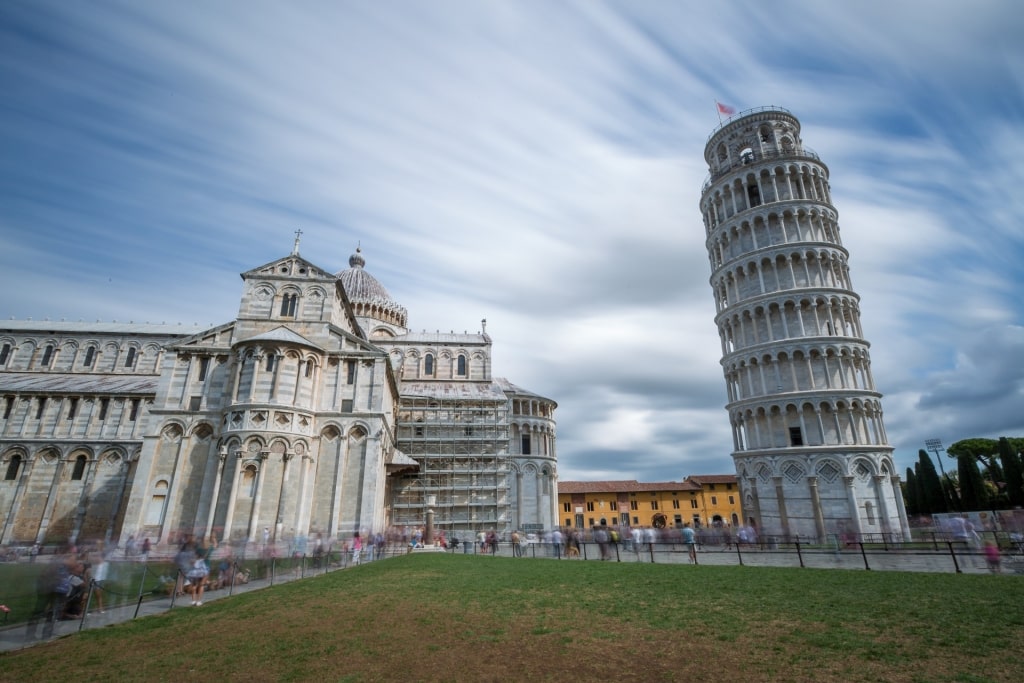
Leaning Tower of Pisa, Italy
The world’s most unique buildings rarely need an introduction, including the Leaning Tower of Pisa that Italy is known for. Completed in the 14th century after taking 199 years to build, the Leaning Tower is the circular bell tower of Pisa Cathedral.
Each of this unique structure’s seven floors is adorned by columns and at the top are seven bells, the largest weighing 3.5 tonnes. The 190-foot lopsided tower is most famous, of course, for its almost four-degree tilt, which is the result of soft foundations.
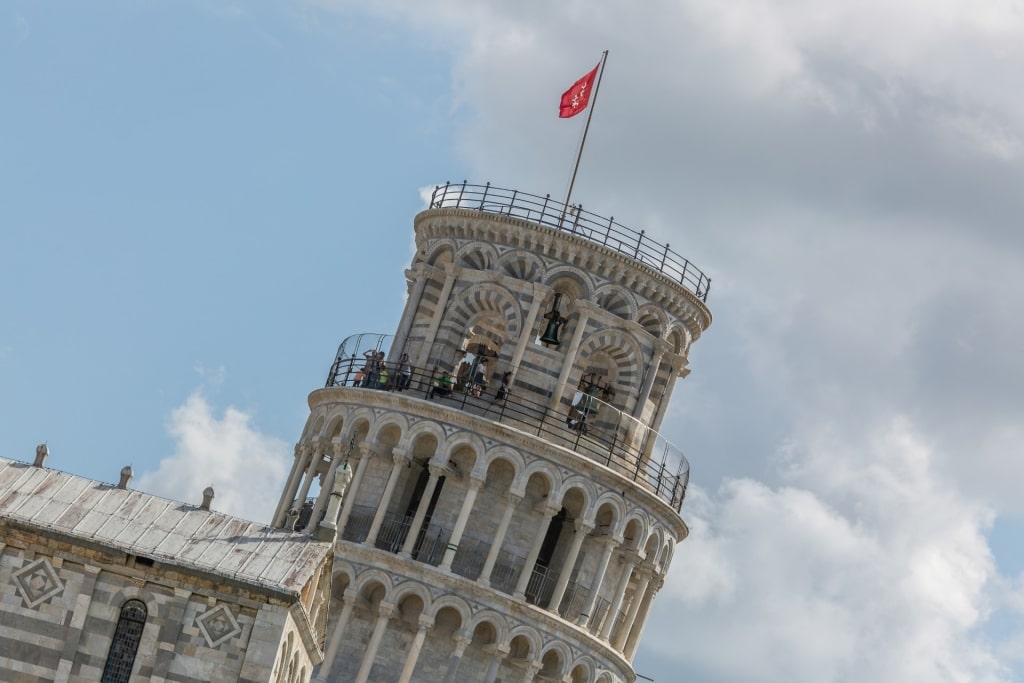
Leaning Tower of Pisa, Italy
Take an obligatory photo from Duomo Square before climbing the Leaning Tower of Pisa’s 273 steps.
The square is also home to a treasure trove of unique buildings, including the Camposanto, with its impressive cloister; the extravagant 13th-century cathedral, with its elegant marble exterior; and Battistero di San Giovanni, a domed baptistry with gorgeous frescoes.
Taj Mahal, Agra, India
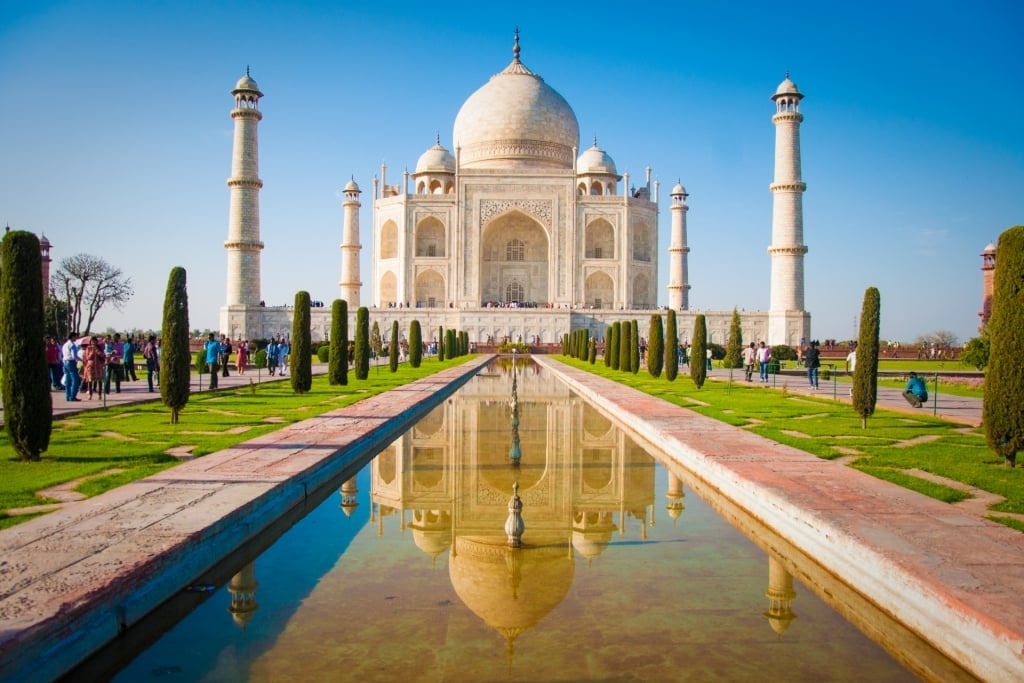
Taj Mahal in Agra, India
Built in the Mughal architecture style, the ivory-white Taj Mahal is situated next to the Yamuna River in Agra, India.
This lavish marble mausoleum was built at the request of Shah Jahan, the fifth Mughal emperor, in 1632, and fully completed around 1648, to house the tomb of his favorite wife, Mumtaz Mahal. The tomb is central to the Taj Mahal, with the 42-acre grounds also including a reflective pool, a mosque, and four freestanding minarets.
A designated UNESCO World Heritage Site and one of the New Seven Wonders of the World, the Taj Mahal is even more beautiful close up. Join a guided tour to maximize your visit and learn more about the Taj Mahal’s backstory.
Sagrada Familia, Barcelona, Spain
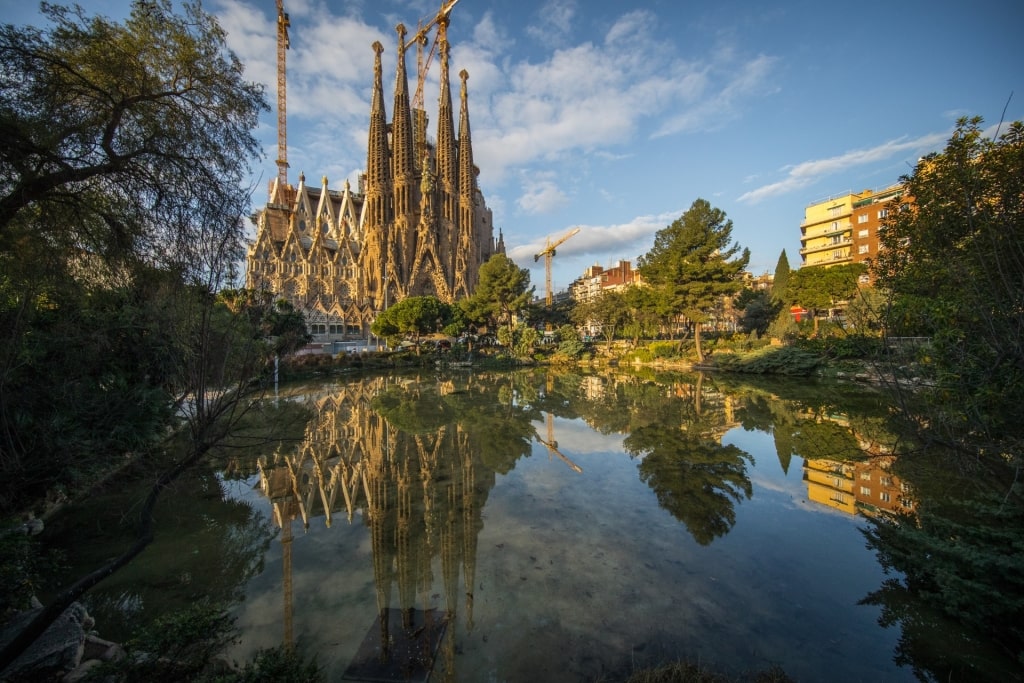
Sagrada Familia in Barcelona, Spain
One of the most beautiful places in Spain, this mind-blowing basilica in the center of Barcelona is the masterpiece of famed Catalan architect Antoni Gaudí, built in the late Spanish gothic, Catalan modernism, and Art Nouveau styles.
Construction of the Sagrada Familia is nearing completion after starting in 1882. Gaudí, who died in 1926 after being hit by a tram in Barcelona, is interred in an underground crypt inside the church.
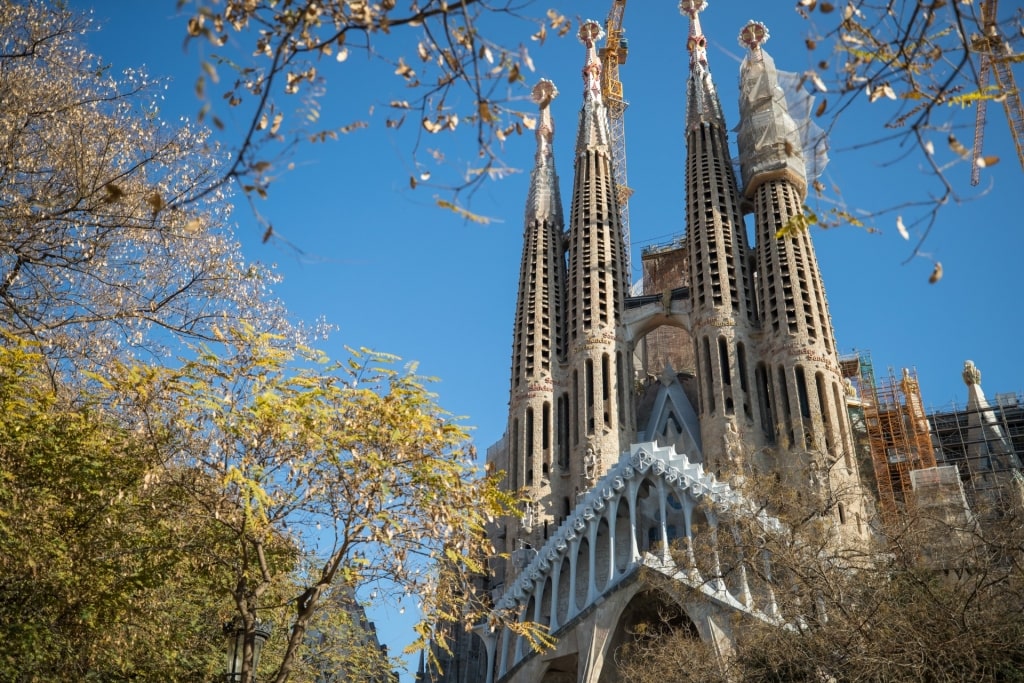
Sagrada Familia in Barcelona, Spain
As far as unique structures go, Sagrada Familia is one of the most extraordinary religious buildings in the world, set to feature 18 towers once fully completed. Twelve towers represent the apostles, a further four represent the evangelists, one is symbolic of the Virgin Mary, and the central tower represents Jesus Christ.
Scope out all of the intricate details of the building’s three facades, the Nativity Facade, the Passion Facade, and the Glory Facade, each one featuring sculptures and gargoyles.
Guggenheim Museum, Bilbao, Spain
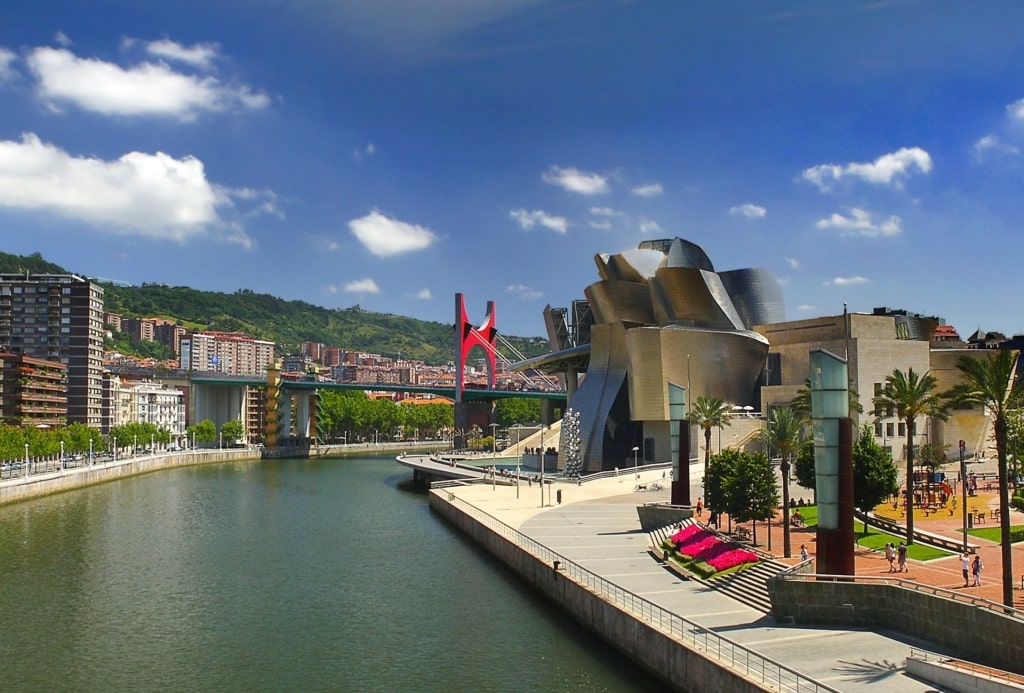
Guggenheim Museum in Bilbao, Spain
The Frank Gehry-designed Guggenheim Museum in Bilbao is easily one of the most unique buildings in the world thanks to its sculptural structure that houses a priceless collection of modern art.
Debuting in 1997, this titanium-clad museum lies on the banks of the Nervión River in Bilbao’s former industrial center. Now, visiting is one of the best things to do in Bilbao.
Inside the Guggenheim Museum Bilbao, the wonder continues with a veil of glass allowing light to flood the large Atrium. The museum’s three levels are set out around the Atrium, connected by sweeping walkways, titanium and glass elevators, and staircases.
There are 20 galleries to discover with a permanent collection containing works by Mark Rothko, Jeff Koons, and Yoko Ono, as well as a program of temporary exhibitions. There is also a fabulous fine-dining restaurant, Nerua, along with a more casual bistro, where the gastronomy is as dynamic as the art and architecture.
Sydney Opera House, Sydney, Australia
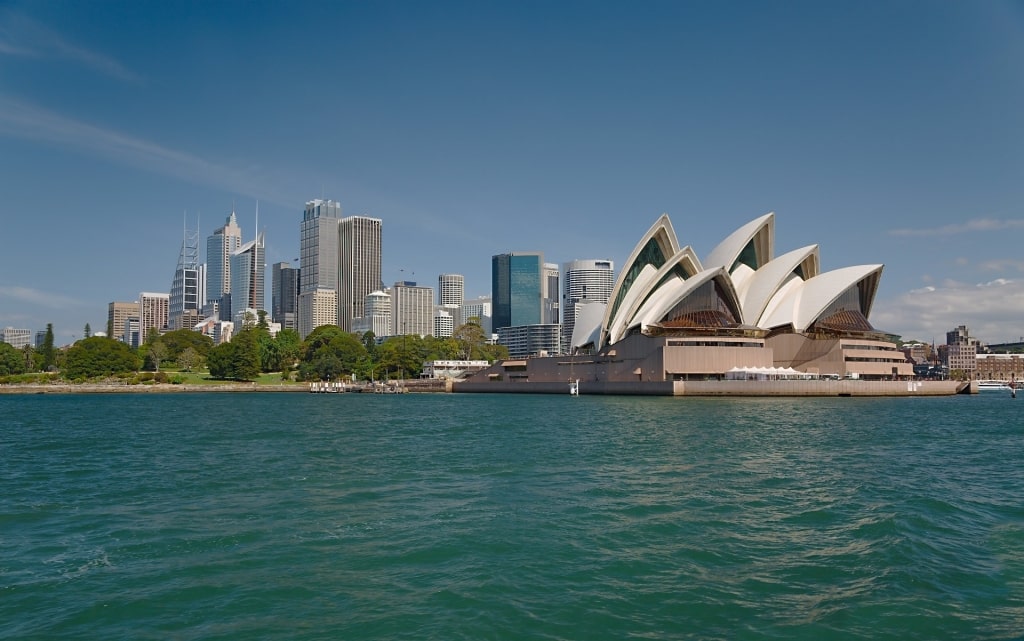
Sydney Opera House in Sydney, Australia
Few of the world’s unique buildings are as elegant and globally recognized as the Sydney Opera House, a music and performance venue that has been a popular Australian landmark since 1973.
Sydney Opera House’s shell-like spherical shape is the work of Danish architect Jørn Utzon, who won a competition to design the building in 1957. This pearly-white UNESCO World Heritage Site in Sydney is clad in over one million mosaic tiles that beautifully contrast with the sapphire-blue water of the harbor.
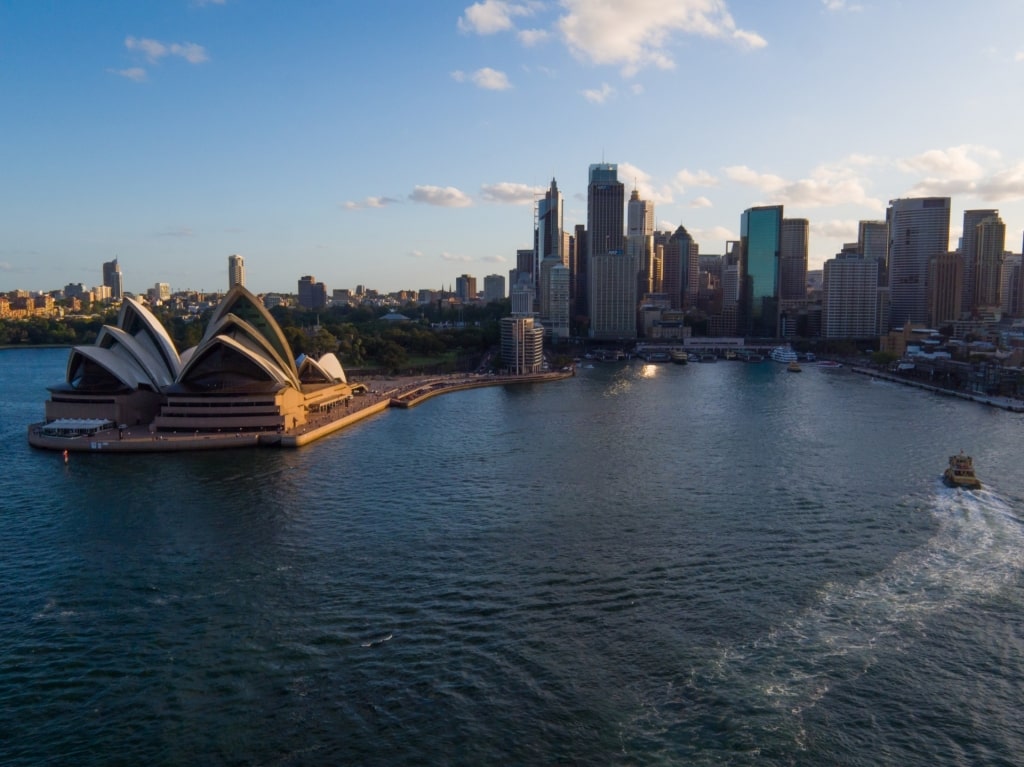
Sydney Opera House in Sydney, Australia
Take a tour of Sydney Opera House, with several options including a Mobility Access Tour, Backstage Tour, and Architectural Tour that takes guests into the depths of the building, backstage, and into the extraordinary main concert hall.
As well as 40 weekly performances, there are a handful of restaurants at the Sydney Opera House, including Bennelong by the masterful Peter Gilmore, and the relaxed Opera Bar for terrace cocktails.
Cube Houses, Rotterdam, Netherlands
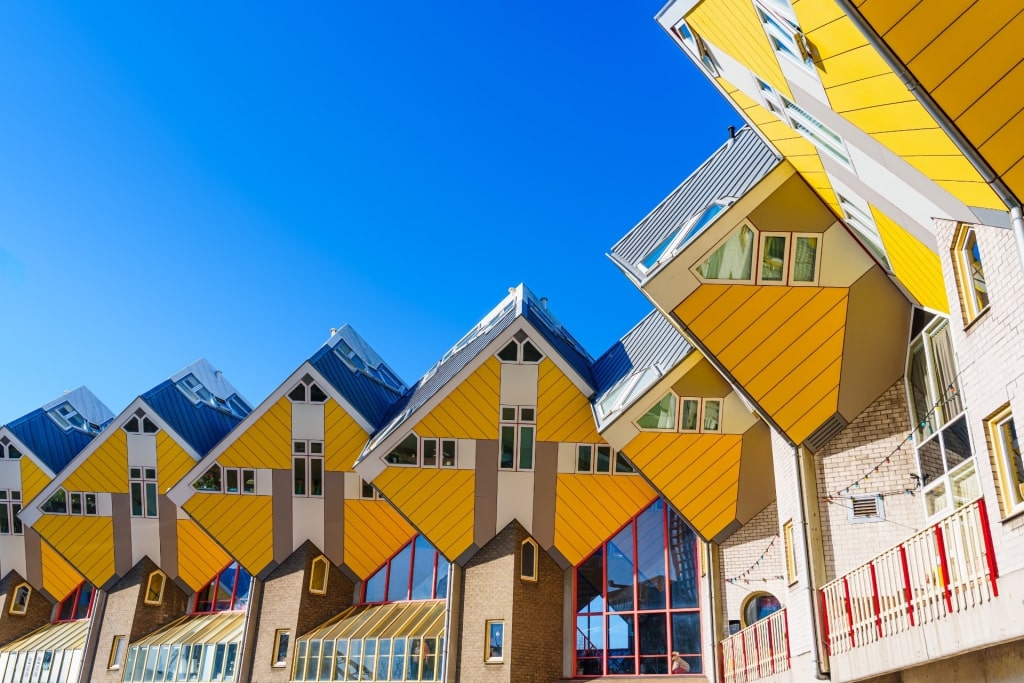
Cube Houses in Rotterdam, Netherlands
Nautical-themed Rotterdam is known for its modern architecture, including its trailblazing Cube Houses, forming the city’s most famous residential accommodation.
Designed by famed Dutch architect Piet Blom, the Cube Houses are a series of yellow and gray cubes that appear to be tilting. The design optimizes space inside, with each cube nestled at an angle on a hexagon-shaped pylon.
The Kijk-Kubus Museum-house is close to Blaak Station, Market Hall, and the old harbor area. Inside, custom-built furniture fills the curious-shaped house and there is information on the Cube Houses’ architecture and the concept behind Blom’s resourceful plan for urban living.
Read: Best Things to Do in Rotterdam
Marina Bay Sands, Singapore
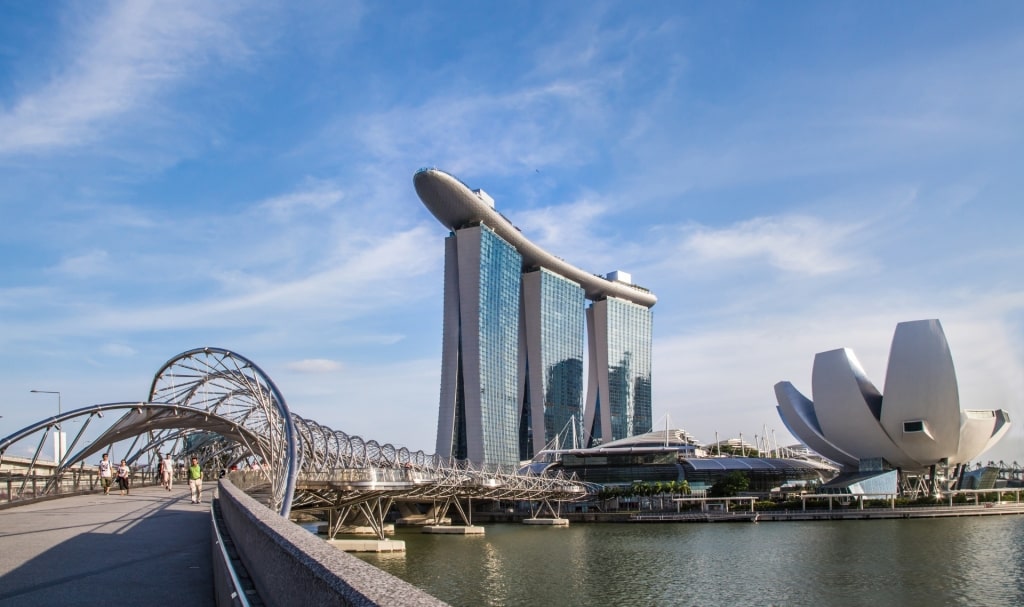
Marina Bay Sands, Singapore
Singapore’s eye-popping Marina Bay Sands is not only one of the world’s best hotels, it’s also one of the most unique structures, directly overlooking the city’s Gardens by the Bay.
This Singaporean landmark consists of three skyscrapers connected by a dazzling 57th-floor infinity pool that’s part of the 1.2-hectare Sands SkyPark Observation Deck. The length of Sands SkyPark Observation Deck is said to be longer than the height of Paris’s Eiffel Tower.
Purchase a ticket to drink in the 360-degree views of Singapore’s skyline. There’s an Italian restaurant, LAVO, and sky bar, CÉ LA VI, perched at the top, where you could sip on a fruity Singapore Sling cocktail.
At ground level, a glossy concourse runs the length of all three towers, home to a series of top-drawer restaurants, including Rise, where a buffet consists of mouthwatering Singapore chili crab, sushi, Iberico pork ribs, cheeses, and charcuterie.
Hallgrimskirkja, Reykjavik, Iceland
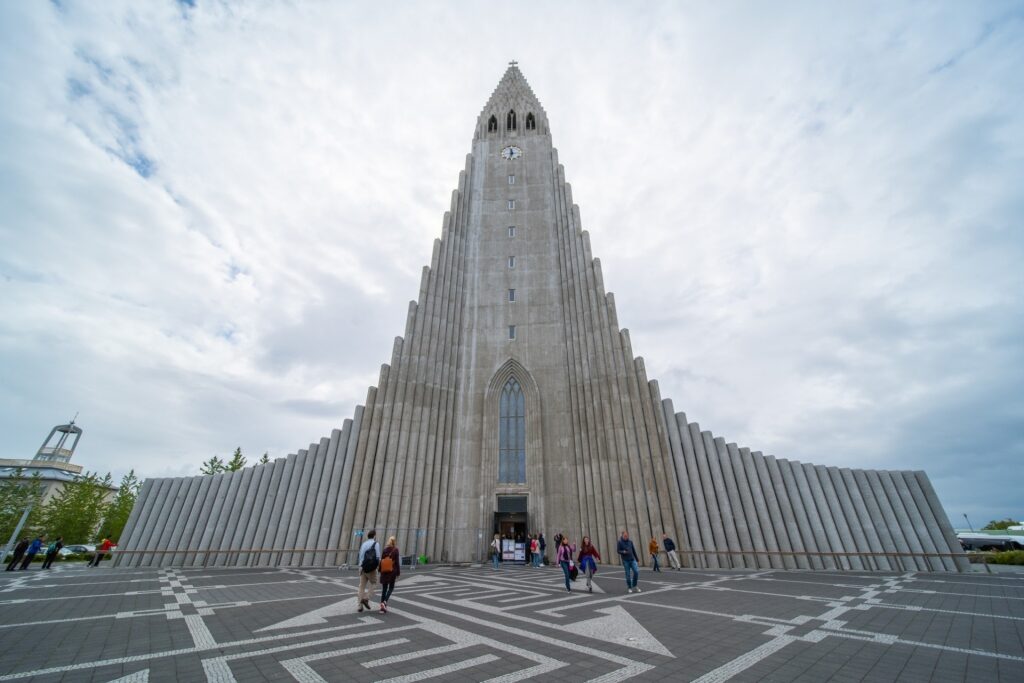
Hallgrimskirkja in Reykjavik, Iceland
Unique structures in Iceland are typically of the natural variety—vast glaciers and soaring mountains—but in downtown Reykjavik, Hallgrimskirkja rises from a hilltop, forming a remarkable silhouette on the skyline.
Dedicated to Hallgrímur Pétursson, a 17th-century Icelandic poet and pastor, Iceland’s largest church was completed in 1986. Rising 240 feet, Hallgrimskirkja features a sky-reaching steeple that contains three bells, with a central nave, and a crypt.
Inside, take a look at the largest organ in Iceland before taking the elevator to the church’s observation level for a dramatic bird’s-eye view of Reykjavik and Faxaflói Bay.
St. Mark’s Basilica, Venice, Italy
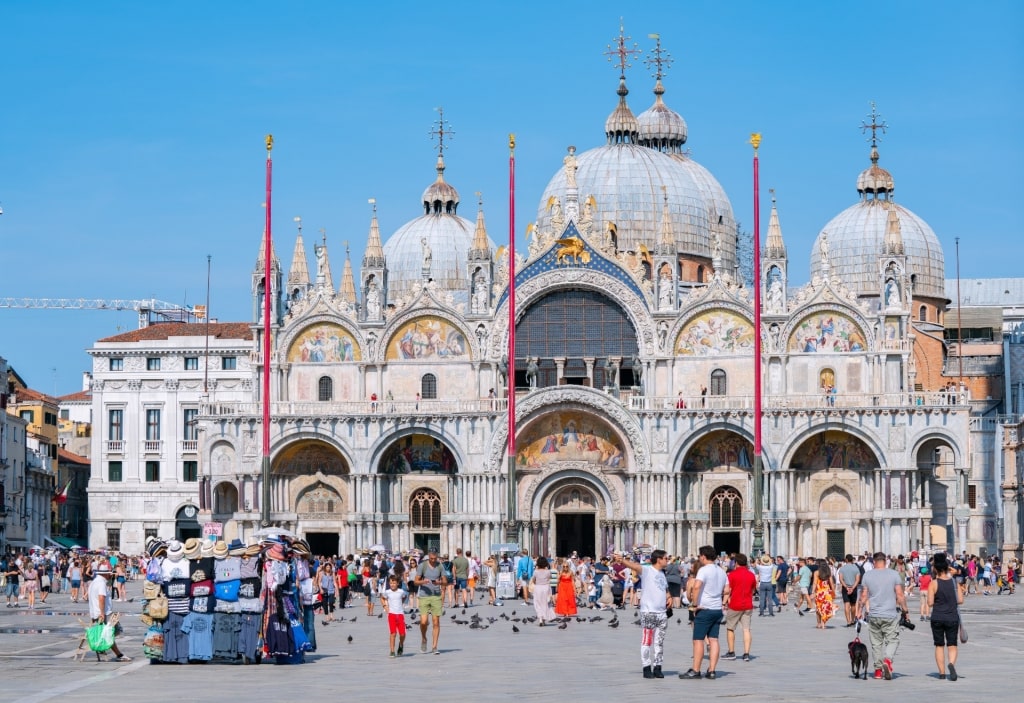
St. Mark’s Basilica in Venice, Italy
Golden lions, grand entrances, Byzantine domes, and lavish mosaics make the sprawling St. Mark’s Basilica in Venice among the most unique buildings in the world.
Dedicated to St. Mark, the patron saint of Venice, who is buried in the cathedral’s crypt, St. Mark’s Basilica is a gilded fairytale that has presided over St. Mark’s Square since the early Middle Ages.
St Mark’s Basilica was the doge’s private chapel until the early 1800s, when it became the city’s cathedral. Today, it lures visitors from all over the world to marvel at its marble-clad walls and mosaic-topped portals, which tell the story of how St. Mark’s body was returned from Egypt to Venice.
It’s a smart move to visit St. Mark’s Basilica earlier during your day in Venice, to avoid some of the crowds that line up to see the centuries-old relics inside.
Space Needle, Seattle, USA
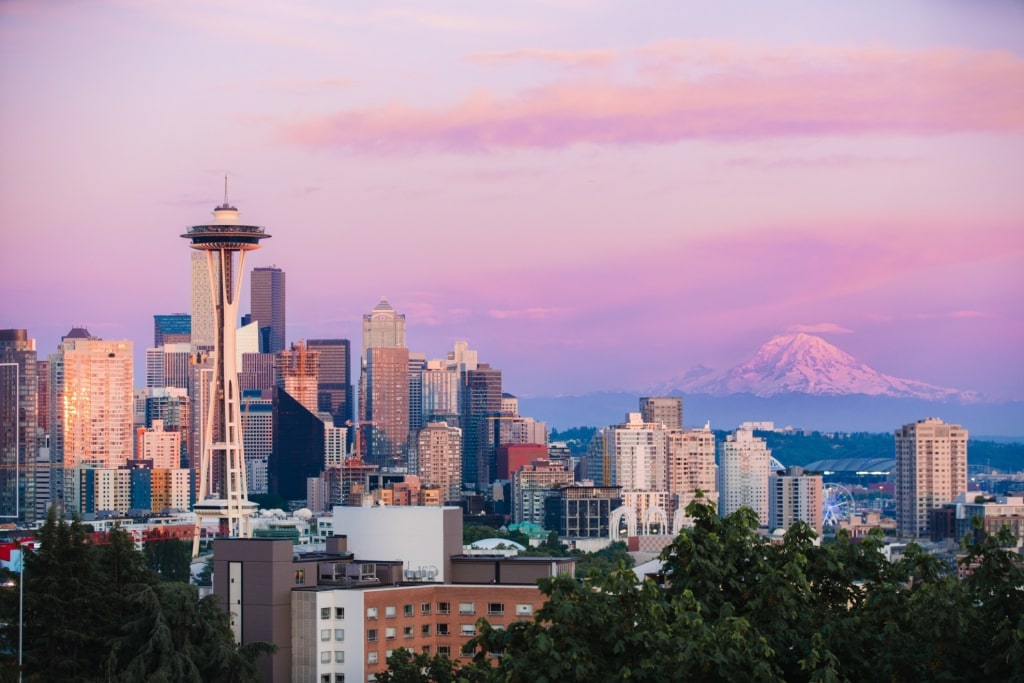
Space Needle in Seattle, USA
The futuristic Space Needle in Seattle is an observation tower dwarfing the Lower Queen Anne neighborhood of Seattle. Once, it held bragging rights as the tallest structure west of the Mississippi River.
This 605-foot landmark that Seattle is known for was built for the 1962 Century 21 World’s Fair, featuring a unique flying saucer design at the top.
Glide up to the 520-foot indoor and outdoor observation deck for 360-degree views of the modern city and the surrounding landscape, including the snow-capped Mount Rainier. Not for the timid, the Loupe is the Space Needle’s revolving glass floor. Look straight down to see the city beneath your feet.
Tokyo Skytree, Tokyo, Japan
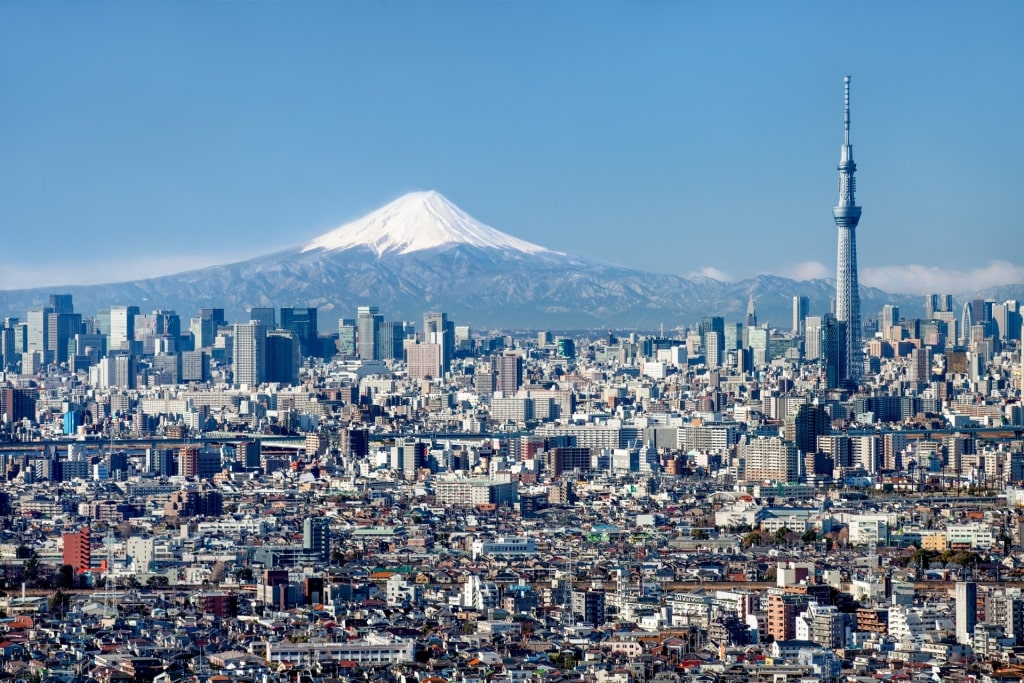
Tokyo Skytree in Tokyo, Japan
The tallest tower in Japan—and third tallest in the world—Tokyo Skytree is a sky-piercing broadcasting and observation tower opened in 2012 that reaches 2,080 feet and dominates Tokyo’s skyline.
Climb to the 1,148-foot glass-enclosed Tokyo Skytree Tembo Deck to marvel at views of Mount Fuji on a clear day. From there, you can access a heart-stopping glass floor a few stories below or travel even higher to the tower’s Tembo Galleria to reach the 1,476-foot Sorakara Point.
There are high-definition telescopes, exhibitions, cafes, restaurants, a shopping mall, and restrooms.
Read: Three Days in Tokyo
Petronas Towers, Kuala Lumpur, Malaysia
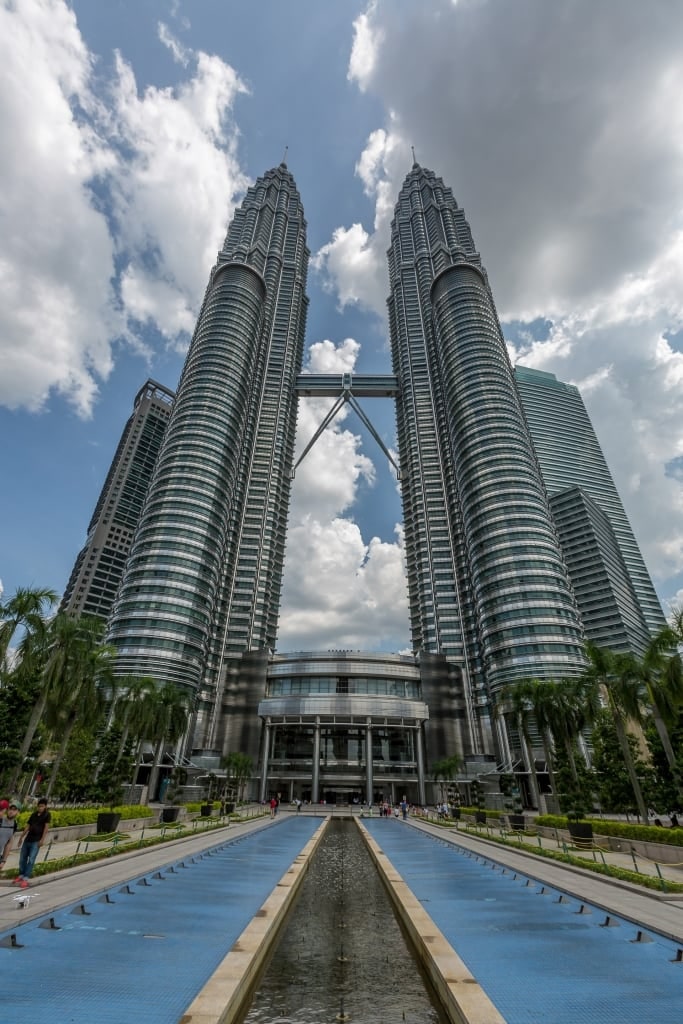
Petronas Towers in Kuala Lumpur, Malaysia
Set within a luxuriant 17-acre green park with ponds, a playground, and walking paths, the gravity-defying Petronas Towers are synonymous with Malaysia’s bustling capital, Kuala Lumpur.
The Argentinian-American architect Cesar Pelli—who also designed New York’s World Financial Center and the International Financial Center in Hong Kong—masterminded the design of the Petronas Towers.
These modern high rises consist of 88 stories, are 1,483-feet tall, and their defining feature is the 41st and 42nd-floor Skybridge that links the two towers. Visiting the 86-floor Observatory is one of the best things to do in Kuala Lumpur. There are two ticket types available, one for the Skybridge and another for both the Observatory and Skybridge.
Pena Palace, Sintra, Portugal
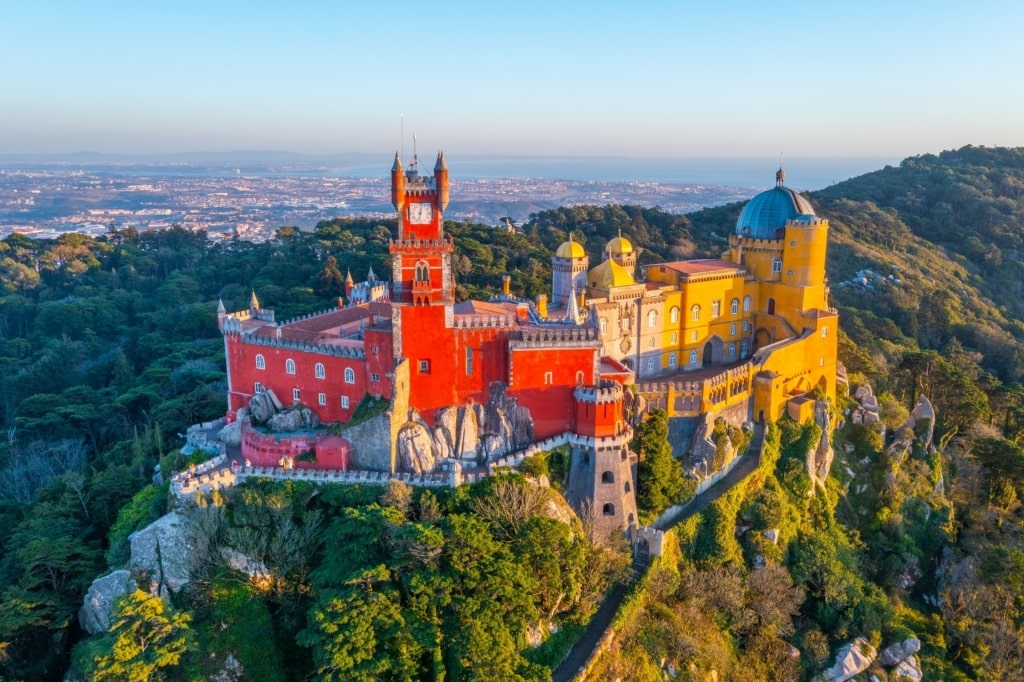
Pena Palace in Sintra, Portugal
Pena Palace is a whimsical castle that sits on a hilltop in Sintra, outside of Lisbon. It’s one of the world’s best examples of neo-romantic architecture.
Commissioned by Ferdinand II of Portugal as a summer residence for the Portuguese royal family, the multicolored castle was completed in 1854 on the site of a former monastery. Within the grounds, visitors are met with a dazzling mashup of neo-medieval, renaissance, gothic, and Moorish architecture, with turrets, gargoyles, ornamental buttresses, and copper domes.
Pena Palace is surrounded by paths, gardens, and forests that make it one of the best things to do in Sintra, with views stretching for miles around. It’s just 18 miles northwest of Lisbon, and a place where you can explore how the Portuguese royals once lived.
Hagia Sophia, Istanbul, Turkey
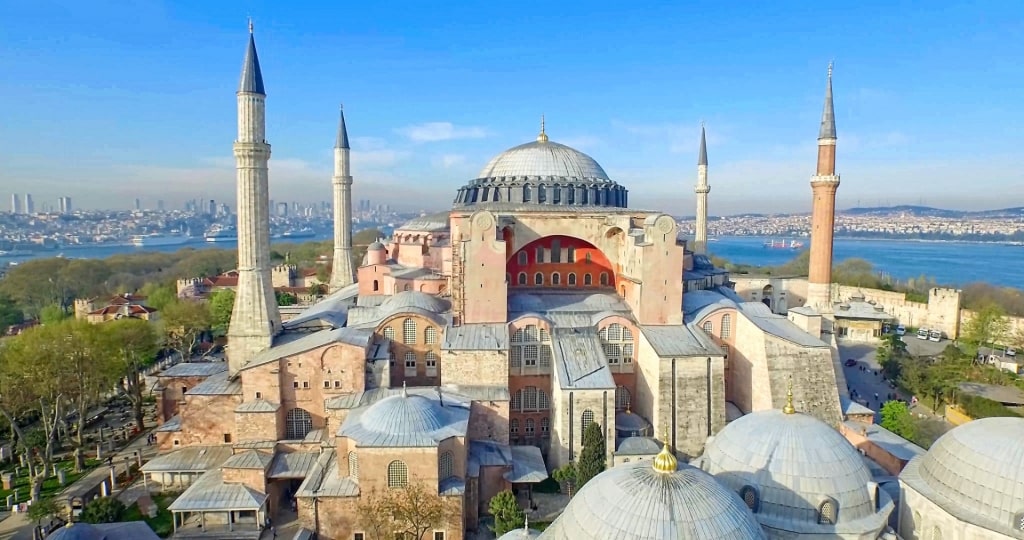
Hagia Sophia in Istanbul, Turkey
One of the best places to visit in Istanbul is the sensational Hagia Sophia. This former church was built during the Byzantine Empire in 537 and subsequently turned into a mosque in 1453 by Sultan Mehmet II, when four minarets were added.
Facing Sultanahmet, this Byzantine marble building features a golden interior, with stained-glass windows, and original mosaics that cover the 182-foot dome ceiling.
It’s important to follow local customs and etiquette when visiting the Hagia Sophia and other religious landmarks in Istanbul. This means wearing a head covering for women, which are available for a small fee from the ticket booth, and dressing modestly with no skin on show. Similarly, for men, this means wearing pants, not shorts.
Duomo Santa Maria del Fiore, Florence, Italy
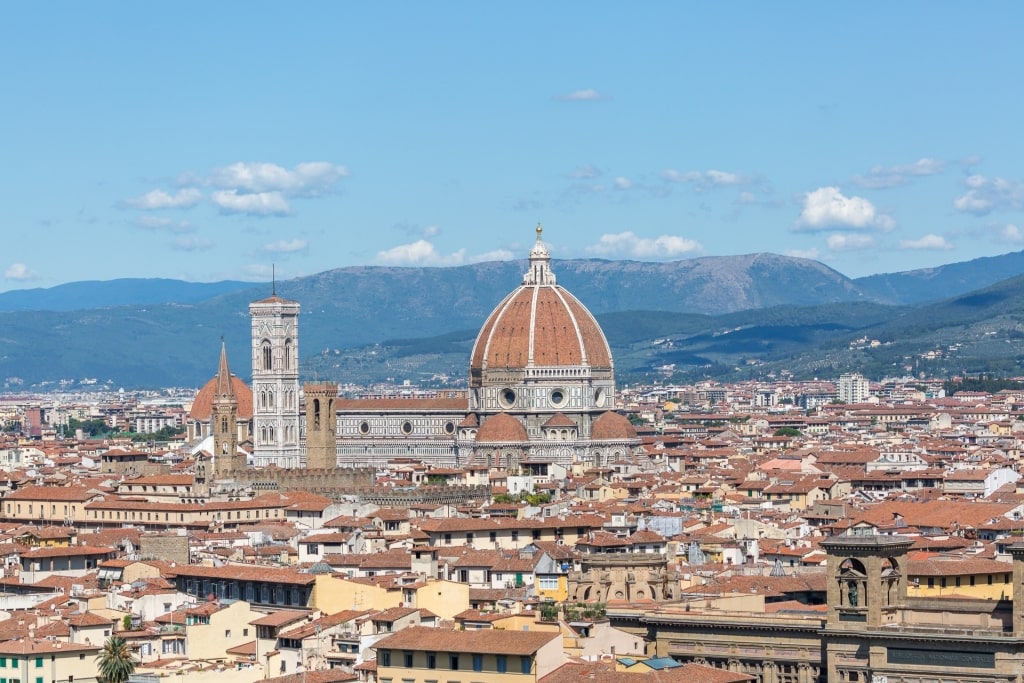
Duomo Santa Maria del Fiore in Florence, Italy
Florence’s 15th-century Duomo is the Rolls Royce of churches. This architectural marvel that Florence is known for is anchored in Piazza del Duomo, along with Giotto’s Campanile and the Baptistery.
Duomo Santa Maria del Fiore is most well known for its soaring Renaissance dome by Filippo Brunelleschi—the largest brick dome ever constructed—making it one of the most unique structures in the world.
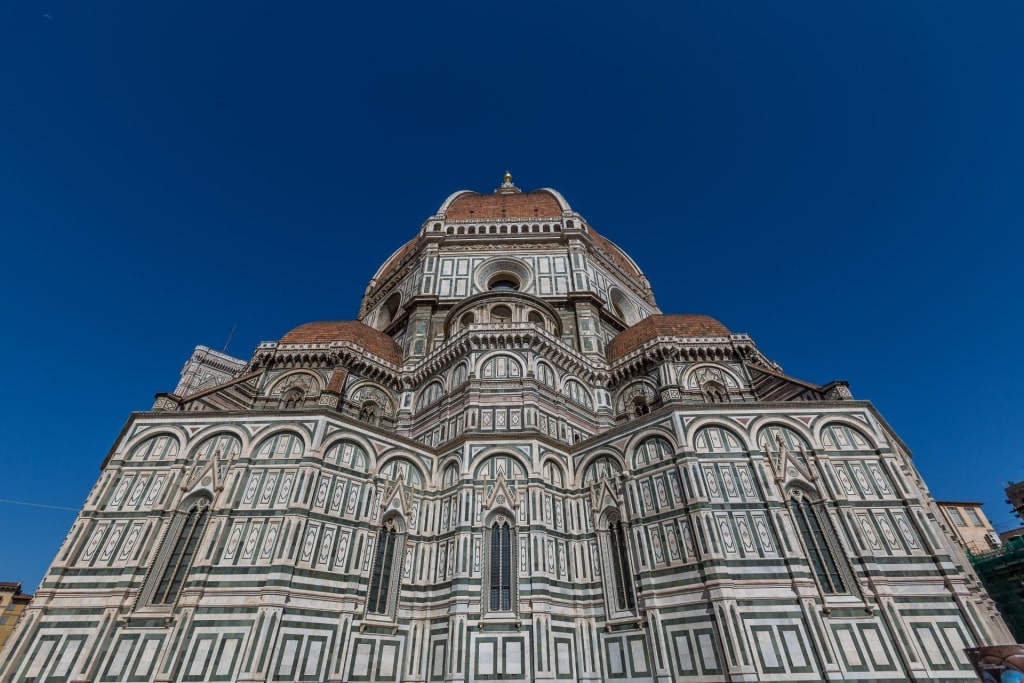
Duomo Santa Maria del Fiore in Florence, Italy
The exterior of Duomo Santa Maria del Fiore is covered in marble panels with white borders and inside there is an exquisite marble floor, and frescoes by Paolo Uccello and Giorgio Vasari.
If you’re claustrophobic or afraid of heights, it might be best to skip climbing the winding narrow stone staircase to the top of Piazza del Duomo. If you’re game, though, and can handle the 463 steps, it’s a breathtaking experience in Florence that is worth the effort.
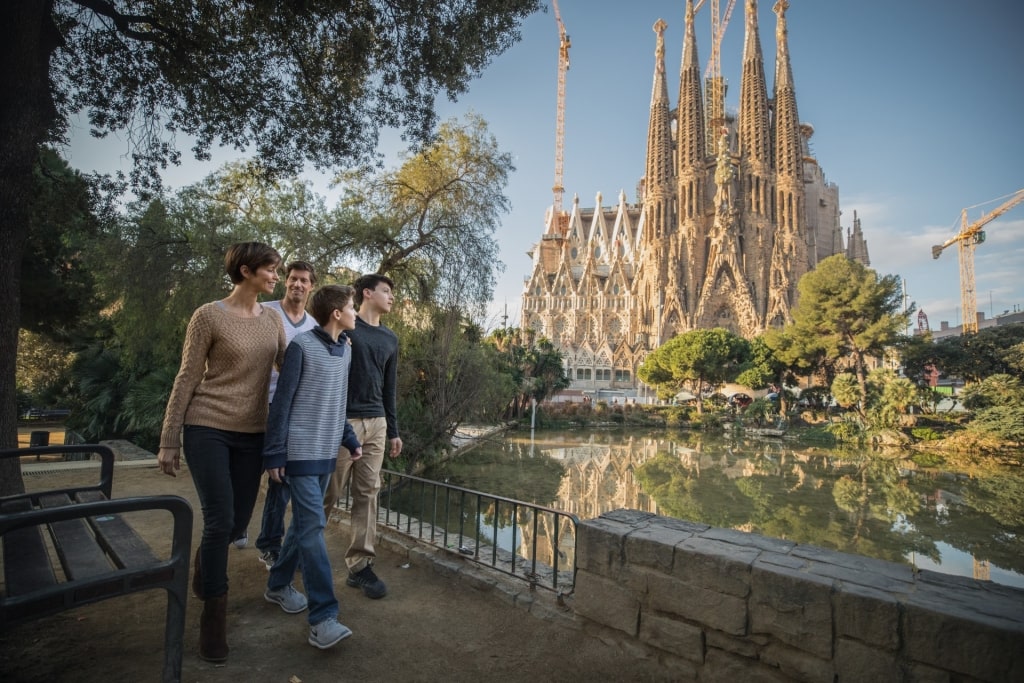
Sagrada Familia in Barcelona, Spain
Explore the world’s most unique buildings on a cultural cruise. From Australia and Asia to Northern Europe and the Mediterranean, discover Celebrity Cruises’ thrilling itineraries to book your next unforgettable vacation.
